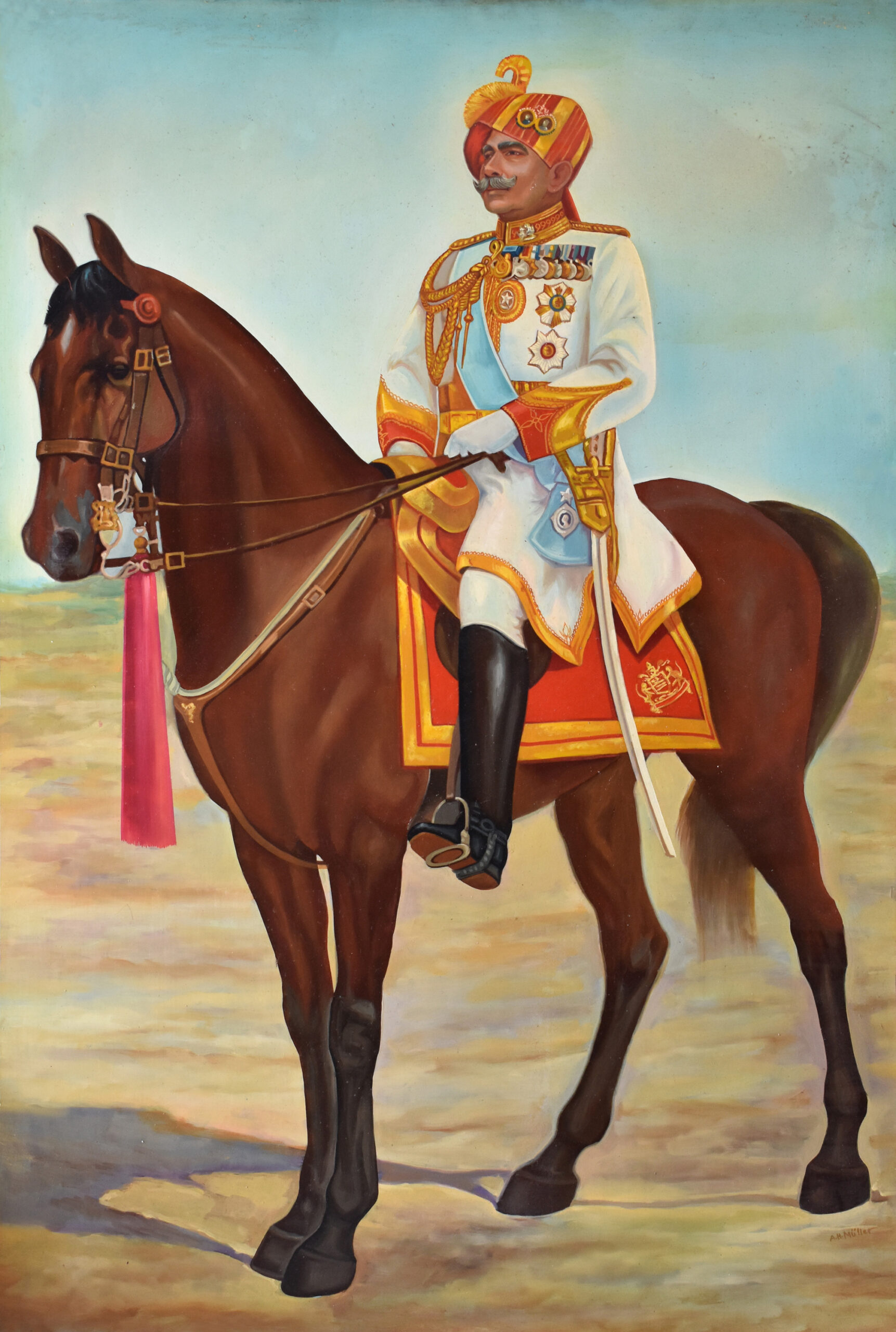General Maharaja Sir Ganga Singh (1880 – 1943)
Maharaja of Bikaner
Artist A. H. Muller (1878 – 1960)
circa 1925, Oil on paper pasted on board
36 x 22.8 in. (91.4 x 57.9 cm.)
Maharaja Ganga Singh of Bikaner was a prominent and respected ruler during the British Raj. His extensive reign, beginning in 1887, was characterized by forward-thinking reforms in crucial sectors like education, irrigation, public health, and infrastructure, demonstrating his visionary approach. A skilled diplomat and military leader, his influence transcended regional limits; he represented India in the Imperial War Cabinet during World War I and uniquely signed the Treaty of Versailles in 1919.
In 1925, his powerful presence and statesmanship were immortalized in an impressive equestrian portrait by A.H. Muller, the Bikaner court painter. Muller, proficient in academic realism, had a remarkable ability to depict grandeur with precise detail. His representation of Ganga Singh seamlessly blends British imperial portrait traditions with Indian royal symbolism.
The artwork portrays Ganga Singh mounted on a noble horse, dressed in full military regalia, exuding authority and command. The composition, attire, and stance effectively communicate his dual identity as a loyal British ally and a proud Rajput ruler. This portrait stands as a significant visual record of princely identity in colonial India. It also highlights the collaborative role of artists like Muller in shaping the image of Indian royalty during the late colonial period.
